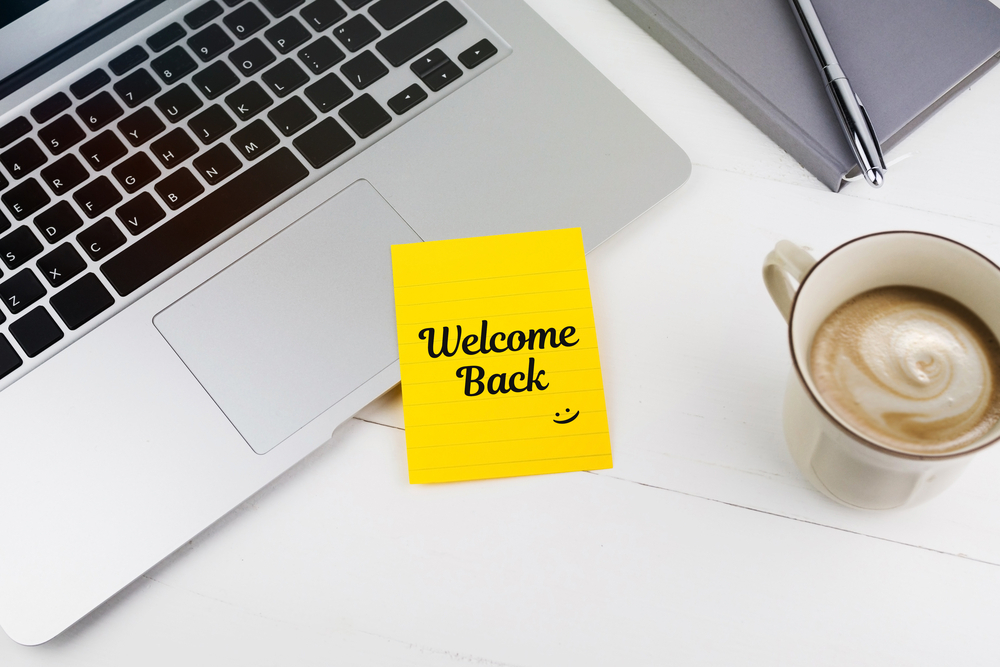Supporting employees back to work after a mental health related absence is a key theme in the new World Health Organisation guidelines on mental health. As with many of the recommendations, they advocate that employers need to take more responsibility for looking after the mental health of returning workers, rather than expecting them to manage their rehabilitation purely on their own.
This is a good thing, according to Jo Yarker, director at Affinity Health at Work, who was involved in the research process for WHO’s new guidance.
Historically there’s been an over-reliance on the employee
“There’s historically been an over-reliance on the individual to feel ‘100%’ when they return to work. The thinking has been ‘all or nothing’,” she says. “The fact is, most people are not entirely ready when they go back but work can be a valuable part of an individuals’ recovery – if the individual is able to gradually return they can build their confidence, their sense of self-worth, and their stamina for work. It is a brilliant positive for sustained mental health, but only if it’s managed well.”
Affinity’s research shows that even if an individual is very self-motivated to get better, they still need the support of their colleagues, line manager, policies and practice in order to make a full recovery and avoid relapse. Affinity’s new return to work toolkit provides practical resources for colleagues, line managers and HR professionals to help everyone work together towards a sustainable return. Nevertheless, Yarker says she’s seen on numerous occasions incidences where companies expect workers, who’ve been on a mental health break, to come back “better than ever”.
Work is part of the rehabilitation process
Dr Julie Denning, managing director of Working to Wellbeing, and chair of the Vocational Rehabilitation Association, agrees that it should be a balanced “marriage” of individual and organisational intervention, and that “work is part of the rehabilitation process”.
Her company helps employers support colleagues who have longterm health conditions to remain in, or return to, work when ready.
“Our goal isn’t necessarily to get someone 100% fit before they go back to work,” she says. “We integrate work as part of the pathway to recovery because doing so increases your physical, cognitive and emotional strength, as well as your stamina. So it’s a really important part of the journey.”
Line managers are the crucial first line of defence
Line managers are the crucial first line of defence when it comes to preventing a mental health problem escalating because early intervention makes all the difference. In Denning’s experience though, many line managers don’t know what to say if they suspect a problem, or potential relapse, and feel intimidated because they’re not counsellors and don’t have psychological expertise.
That was one of the main reasons for Work to Wellbeing launched a line manager assistance programme with a helpline, in May. This gives employers access to expert vocational rehabilitation clinicians to discuss how to best support their team’s wellbeing, particularly around having difficult conversations.
Denning stresses that managers don’t need to have clinical expertise and the most impactful, effective action to take is asking the individual what they need and really listening to the response. Often, too, it’s about asking twice, saying something like “I’ve noticed you’re not quite yourself, are you OK? Are you sure?”
Asking the right questions
“In many cases we spend more time with our colleagues at work than with our families and friends, so line managers could be the first people to detect a problem,” she says. “The important thing is the willingness to just go and sit with the individual and say ‘what do you need? How can I help? Are there any workplace factors that are exacerbating the issue? What can we do to support you?”
At that point, line managers can signpost employees to resources like wellbeing action plans, the EAP or PMI. They can also help people returning to work by offering more flexibility around their tasks. For instance, if the individual is starting to struggle then actions like extending deadlines can prevent their anxieties building up and causing a relapse.
Reasonable adjustments
“It’s about working closely with them so that you enable them to stay at work and make reasonable adjustments they may need,” she says, adding that the term ‘reasonable adjustments’ is deliberately vague as there is no ‘one size fits all’ suite of adjustments as these will vary depending on the individual, the sector, the role, et cetera.
Dr Judith Grant agrees that giving line managers tools to use in supporting their employees is “really important” and agrees they don’t need to be “an expert” on a health conditions but they do need to be able to have a “supportive conversation”.
When she worked at the Royal Mail Group, she was part of a team that implemented a ‘Guided Conversation’ process. This was basically a stress risk assessment incorporating the core areas of the HSE Management Standard Indicator Tool. As well as conversation prompts to identify any external factors that might be contributing, it also includes a process chart to guide the managers, employee and trade union representative through the process.
Giving line managers tools
“Giving managers tools to have conversations about topics they may find difficult is really important so they understand what their responsibilities are, and aren’t, and have confidence. For some people this comes naturally but not for everyone,” she says. “This process was aimed at giving managers confidence, and a template to use, to support employees who were experiencing stress at work and we also encouraged its use as part of a ‘Welcome Back’ discussion.”
Employers following best practice will meet with the returning employee to discuss a return to work plan. During this meeting the two parties work towards a solution that works for everyone. This is a very important dialogue to have as it sets expectations on both sides before the employee returns to their position.
Meetings to agree the return process between the line manager and the employee, but also to the rest of the team, are important to set expectations and potentially destigmatise situation for the individual who has experienced mental health issues. (See Dr Judith Grant’s perspective on her own return to work experience after contracting long Covid here).
Clarity is key
Simon Arthur was formerly a global talent scout for AstraZeneca and during the pandemic, when wellbeing rocketed up the corporate agenda, he observed that there weren’t any recruitment firms specialising in workplace wellbeing talent, so he set up Sanatio last month.
He has seen that, when talent returns to the workplace after a mental health absence that, if there isn’t clarity, “resentments can build” whereby co-workers who haven’t been offered the same adjustments feel like the employee in question is getting preferential treatment. The way to get round this, he advises, is to offer all the team the same adjustments if possible.
Indeed, Arthur says one of the biggest worries he hears from those returning to work is what others think, and commonly they can feel nervous and uncomfortable.
“I’ve had clients come to me who’ve been in therapy or coaching and said returning to work can feel like a ‘walk of shame’,” he says. “They talk of dreading team meetings and people looking at them thinking ‘should I stand near them or will they have a panic attack?’ In fact, the attitudes of co-workers can make the whole process come crumbling down and have a really negative impact on someone’s return to work.”
Talking openly
This is trickier to address as, while huge strides have been made, there is still a stigma around mental health. As with so many issues in this arena, the best way to destigmatise and de-shame is through talking about it openly and producing clear communications for all on the subject. Arthur says:
“All the niceties and procedures are great but let’s talk about the elephant in the room: how’s it going to be when the person feels triggers from co-workers to the unspoken things? Having a team meeting addressing this head on and getting people to open up about their experience of shame would be the absolute dream scenario, but obviously that’s up to individuals to decide.”
The future is bright(er)
Yarker is optimistic that this dream scenario where people can talk openly about their mental health absence without shame, and as openly as employees talk about cancer absences or other health issues, can become a reality. She believes part of this is acknowledging that we’re all on a continuum of mental health:
“There is a growing understanding of what mental health is, and how it impacts people at work and in life, but it is complex and there are still many workplaces where mental health is stigmatised. What people are increasingly realising though is that our mental health, like our physical health, has a fluctuating nature throughout our employment. We all have times when our health is good and times where our health compromises our ability to thrive at work. For those in senior leadership roles, acknowledging the dynamic nature of our health and the need for policies and practices that respond effectively, will help to give returning employees the best chance of returning to work in a healthy, productive and sustainable way.”
You might also like:
The WHO’s new guidelines on mental health: what you need to know

















